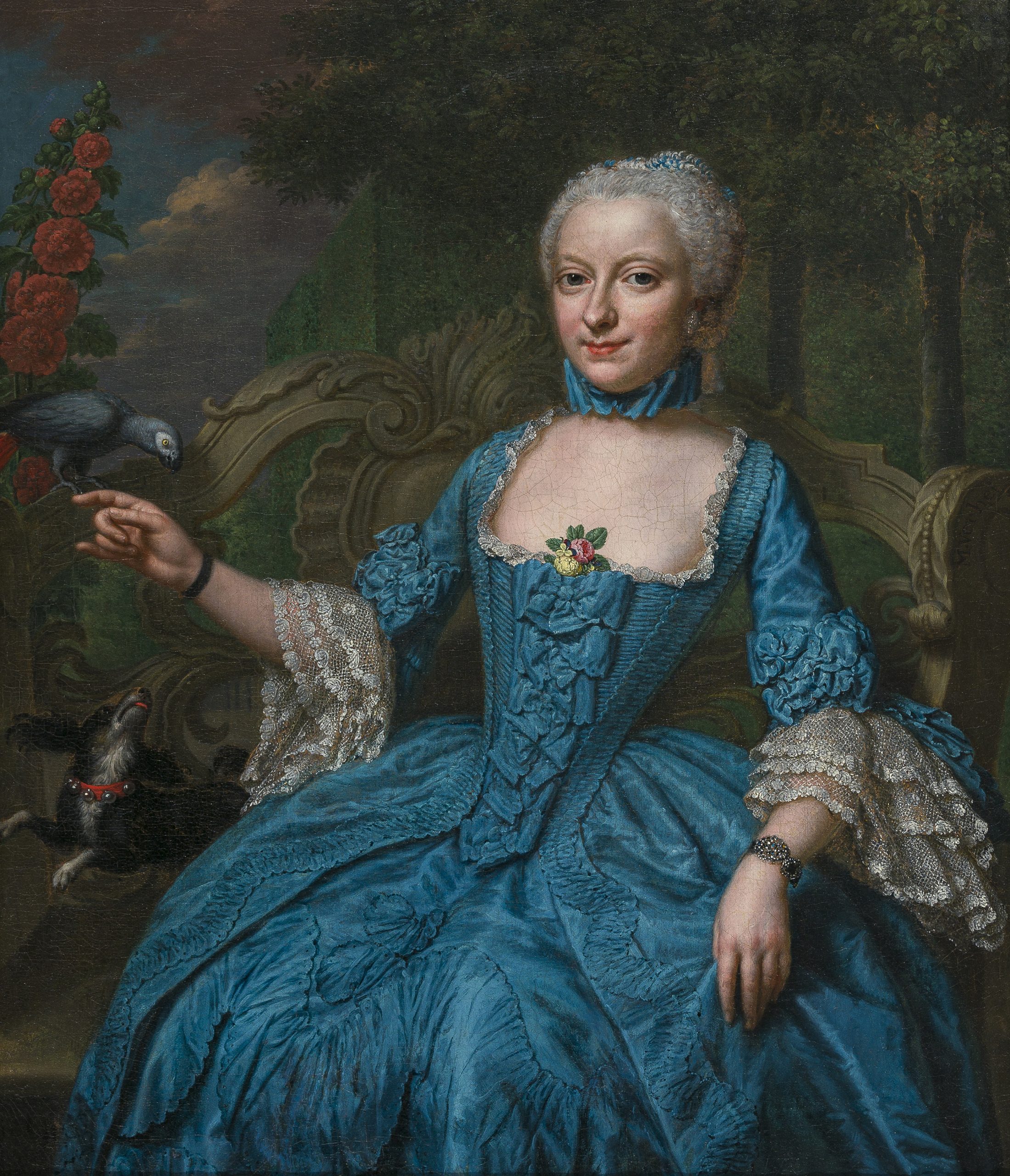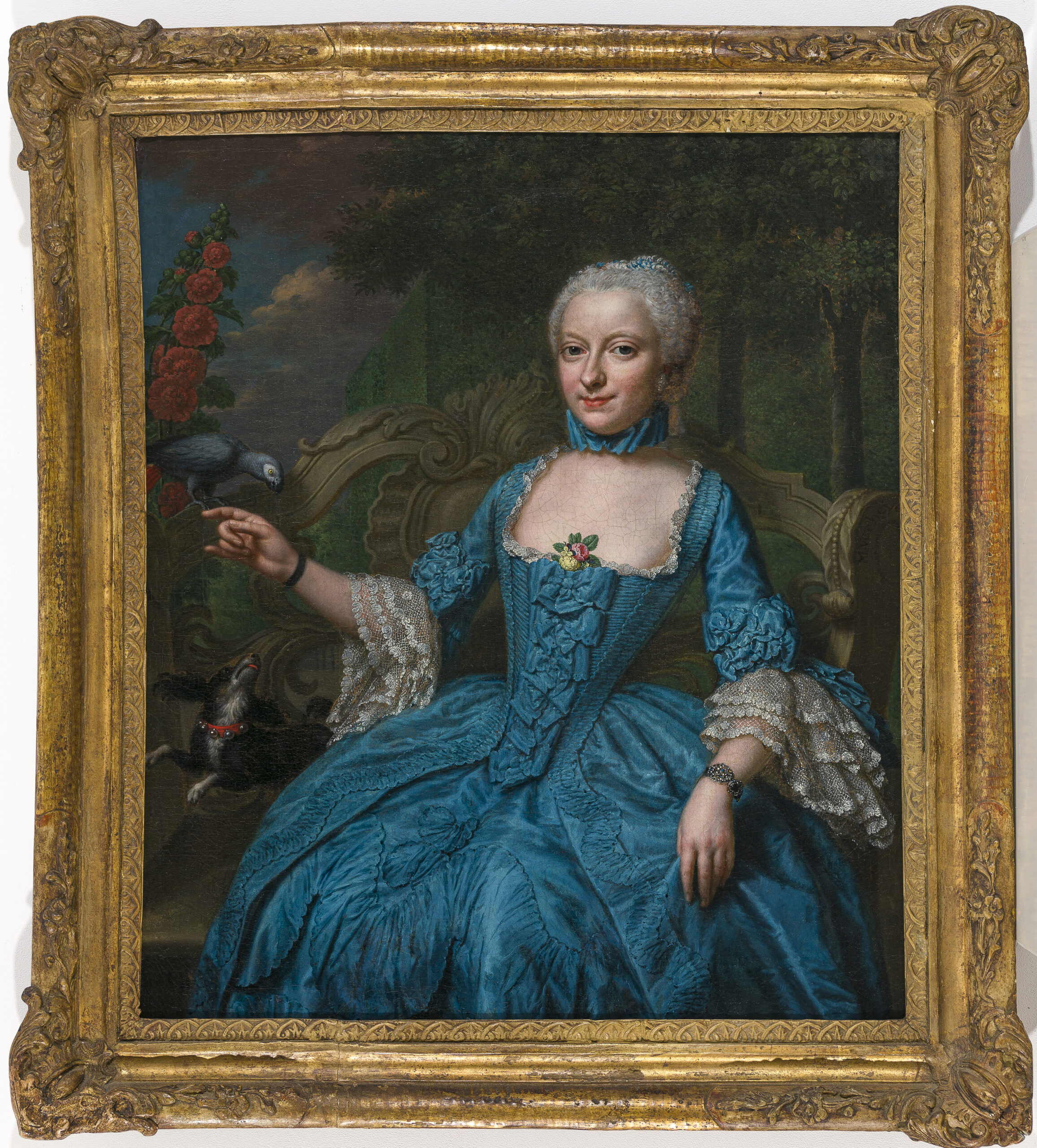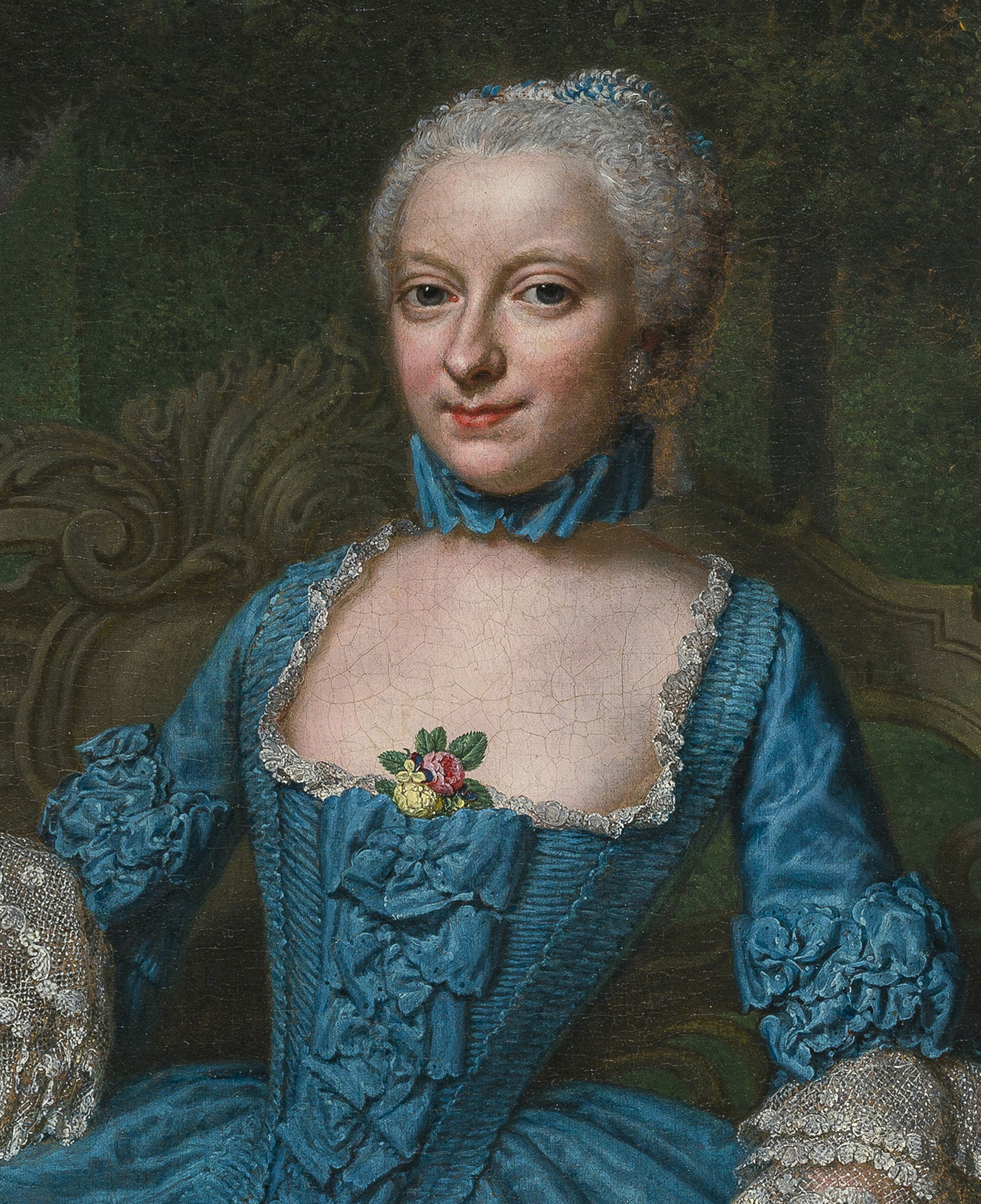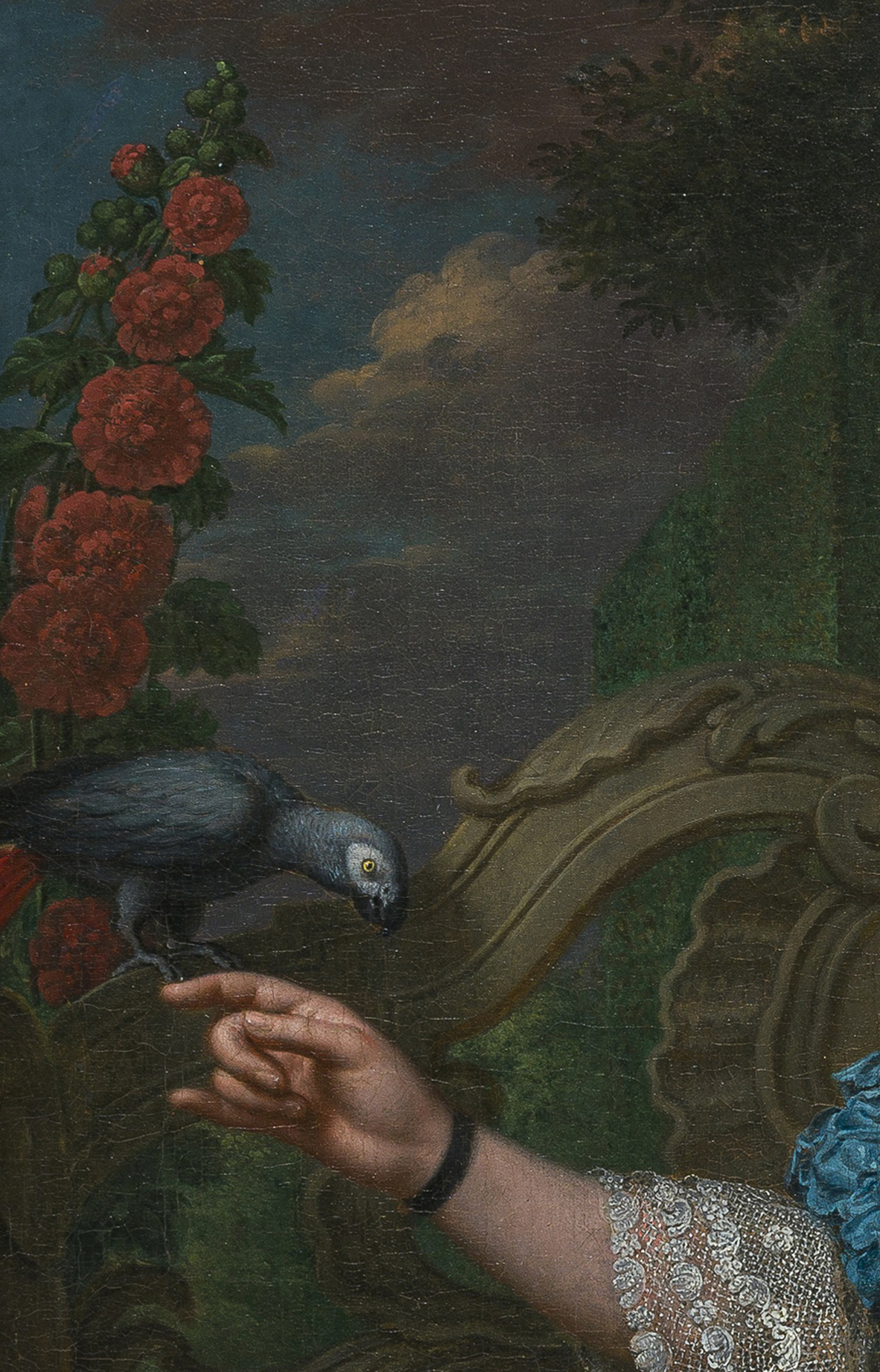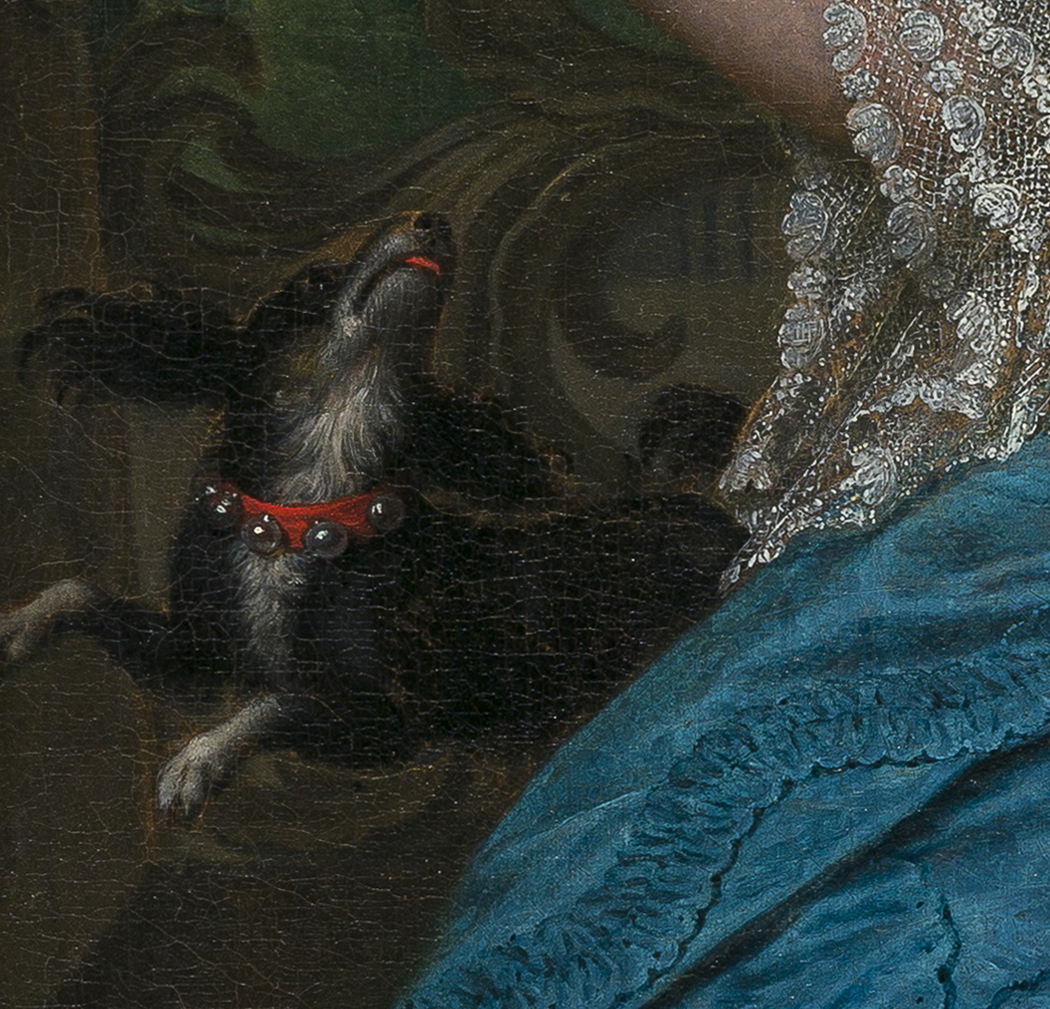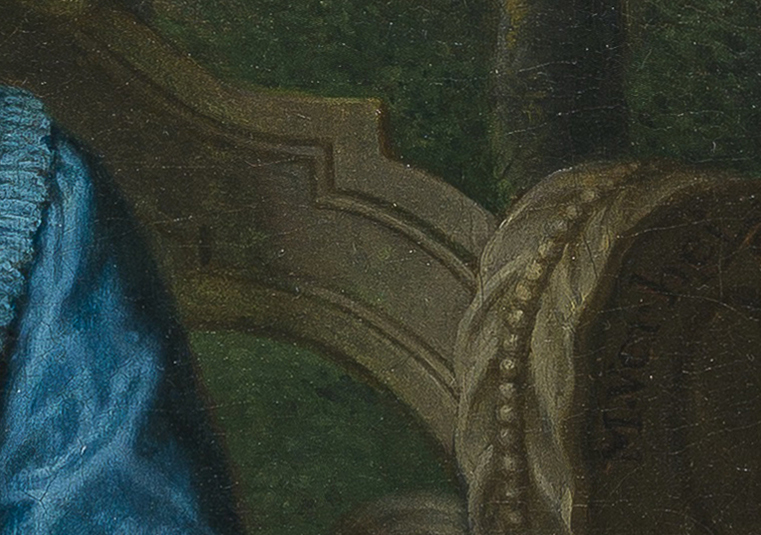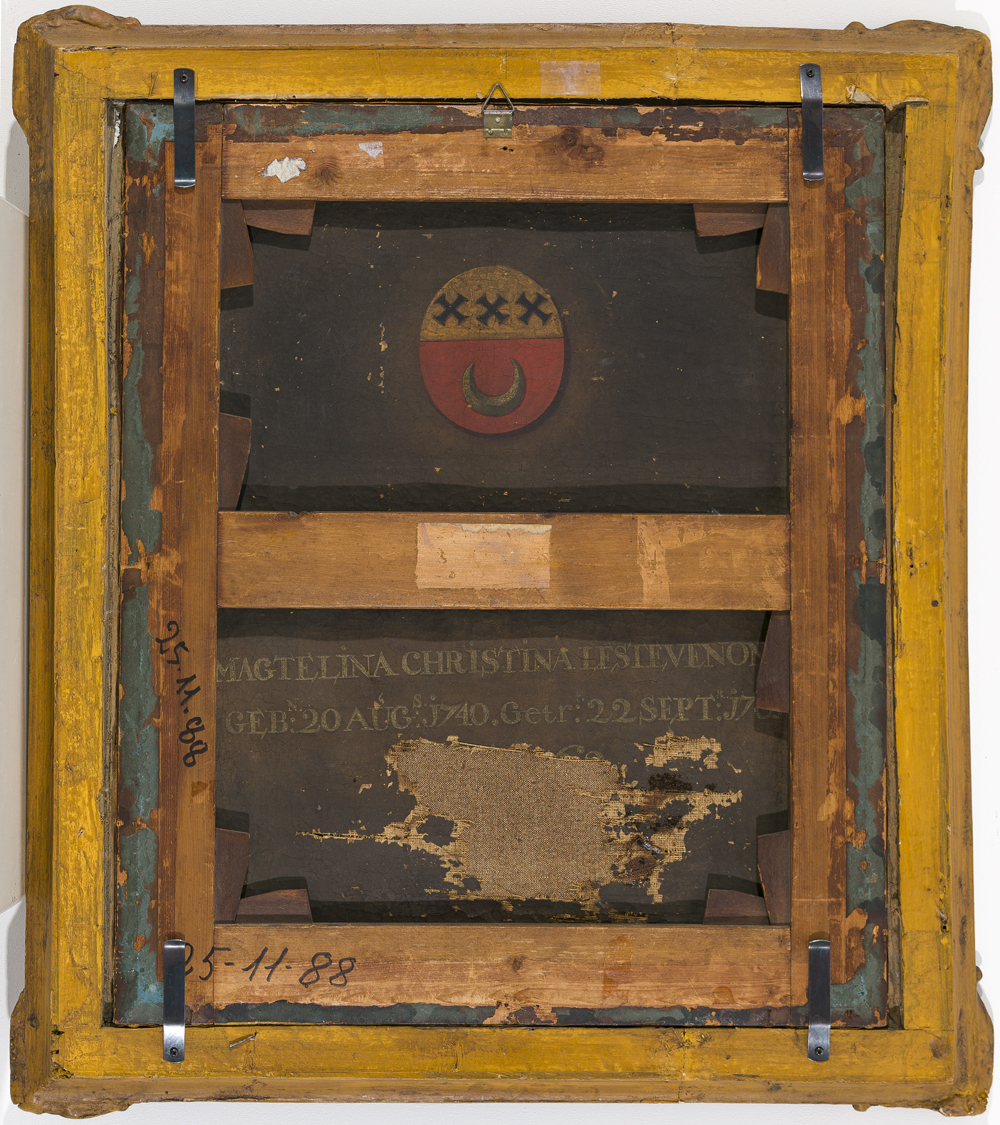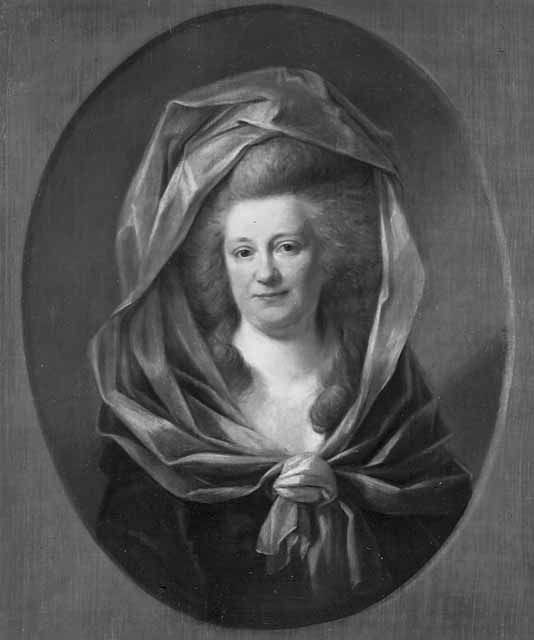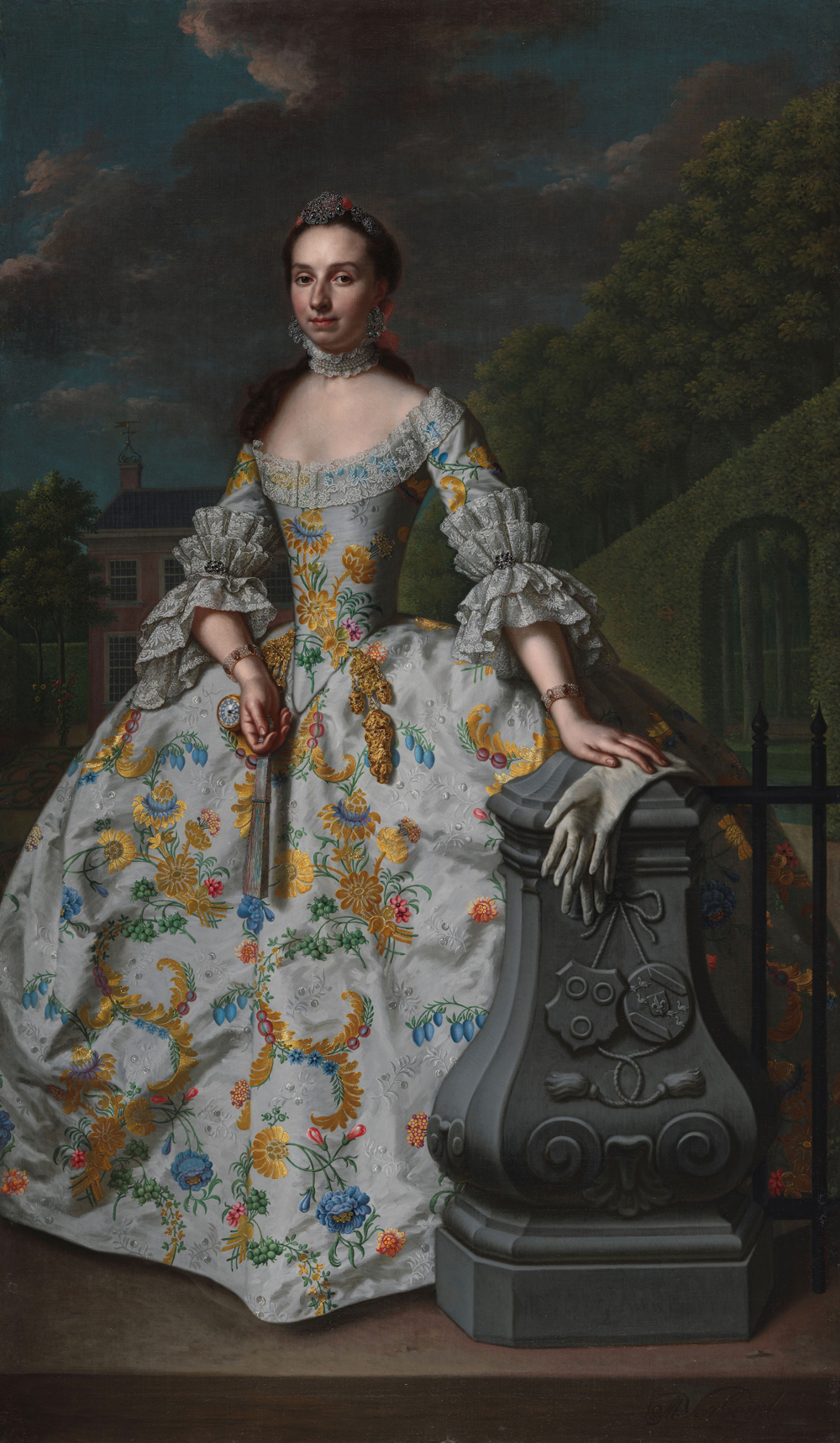MATTHEUS VERHEYDEN (Breda 1700 – 1777 The Hague)
Mattheus Verheyden (Breda 1700 – 1777 The Hague)
Portrait of Machtelina Christina Lestevenon (1740–1788) on a garden bench with parrot and dog
Oil on canvas, 51.8 x 43.6 cm (20.4 x 17.2 inch); contained in the original (?) carved and gilded frame
Signed and dated ‘M. Verheÿden’ (lower right, on edge of bench)
The reverse of an old support canvas with painted coat-of-arms and inscribed ‘MAGTELINA CHRISTINA LESTEVENON / GEBN: 20 AUGS: j740. Getr: 22 SEPTR: 1761.’
Provenance
Private collection, France
***
This recently discovered painting is a notable addition to the small known oeuvre of Mattheus Verheyden. Born in Breda in the year 1700 as the son of the painter Frank Pietersz Verheyden (c.1655–1711) and Maria Puts.1 According to the artist’s biographer Johan van Gool, writing in his Nieuwe Schouburg of 1750, Verheyden was placed under custodianship of the city of Breda upon the death of his father. His custodians sent him to The Hague to study the art of painting with Hendrik Carré II.2 According to Van Gool, Verheyden also studied and copied works by Carel de Moor, Augustinus Terwesten and Constantijn Netscher. By the age of fifteen he had become so accomplished as a painter that he started painting portraits, and dated works are known from 1717. Verheyden’s artistic training was completed with a period in the studio of Carel de Moor, whose elegant portraits he studied closely.
Verheyden painted a number of decorative paintings, for ceilings, chimneys and overdoors, according to the fashion of the period, including supraporte paintings for the Stadhuis aan de Groenmarkt in The Hague, for which he supplied allegories of Architecture and the Arts in 1737.3 However, the artist is best known for his elegant portraits, and received commissions from the most notable families, including Van Wassenaer van Duvenvoorde, Van Schuylenburch, Van Slingelandt and Pauw.
Shown sitting on an exuberant Rococo garden bench in one of Verheyden’s most accomplished works is Machtelina Christina Lestevenon. Born in 1740 as the daughter of the Amsterdam burgomaster François Lestevenon and Elizabeth Alewijn, Machtelina married Jean François van Byemont (1740–1783) in 1761. Van Byemont became burgomaster of The Hague in 1782, but died the following year, upon which the widowed Machtelina married Robert Collot d’Escury (1753–1834) in February 1785. Her portrait was painted again in 1786 by Johann Friedrich August Tischbein (1750–1812) (fig.).4
The present painting, which is in excellent state of preservation, appears to show Machtelina in her juvenile years, presumably the late 1750s, around which period the Rococo movement was at the height of fashion in Holland. Wearing an extravagant sky blue dress, edged with lace, her hair powdered, Machtelina holds out her hand to an African grey parrot, also known as Grey of Gabon, to the amusement of her lap dog. The blue of the dress contrasts strikingly with the bright red of the blooming hollyhock and the dog’s collar. Few portraits by Verheyden are more refined and sophisticated, with the exception of his extraordinary full-length representation of Charlotte Beatrix Strick van Linschoten (1732–1795) of circa 1755 in the Rijksmuseum, painted exactly around the time our portrait was produced, yet which does not possess the informality and spontaneity of our painting (fig.).5,
As much as this is a portrait of a young self-conscious woman, the painting can also be considered as a characterisation of the age of Rococo, its airy and extravagant nature so eloquently captured by Verheyden in this exceptional work. In fact, Verheyden appears to have been instrumental in the dispersion of the Rococo style in the Netherlands: in 1737 he executed ‘drie zinrijke sinnebeeldische teekeningen’ (three meaningful allegorical drawings) as models for the sculptor Jan Baptist Xavery, who carved marble overdoor decorations for the town hall in The Hague after two of these, considered as the earliest manifestation of the Rococo style in the country.6 Verheyden also designed the models for the exuberant Rococo frames around his 1743 portraits of Franco Pauw and his wife Countess Antoinetta Coenradina van Heemskerck.7
1. For the artist, see: Reinier Baarsen, Dirk Jan Biemand, Robert-Jan te Rijdt, Frits Scholten, Nederlandse kunst in het Rijksmmuseum 1700-1800, exh. cat. Amsterdam (Rijksmuseum) 2006, pp. 235-236.
2. Johan van Gool, Nieuwe Schouburg der Nederlantsche Kunstschilders en Schilderessen, The Hague 1750, vol. II, pp. 278-297.
3. J.C. van Herpel, Het oude Raadhuis van 's-Gravenhage, The Hague 1975-1979, vol. I, p. 406, fig.267.
4. Oil on canvas, 90 x 75.5 cm, private collection.
5. Oil on canvas, 206 x 122 cm, Rijksmuseum, Amsterdam, inv. no. SK-A-817; Baarsen et al. 2006, op. cit., pp. 235-236, fig. 44.
6. See Reinier Baarsen et al., Rococo in Nederland, exh. cat. Amsterdam (Rijksmuseum) 2001-2002, pp. 168-169.
7. Baarsen et al. 2001-2002, cat. no. 91, pp. 168-169.
